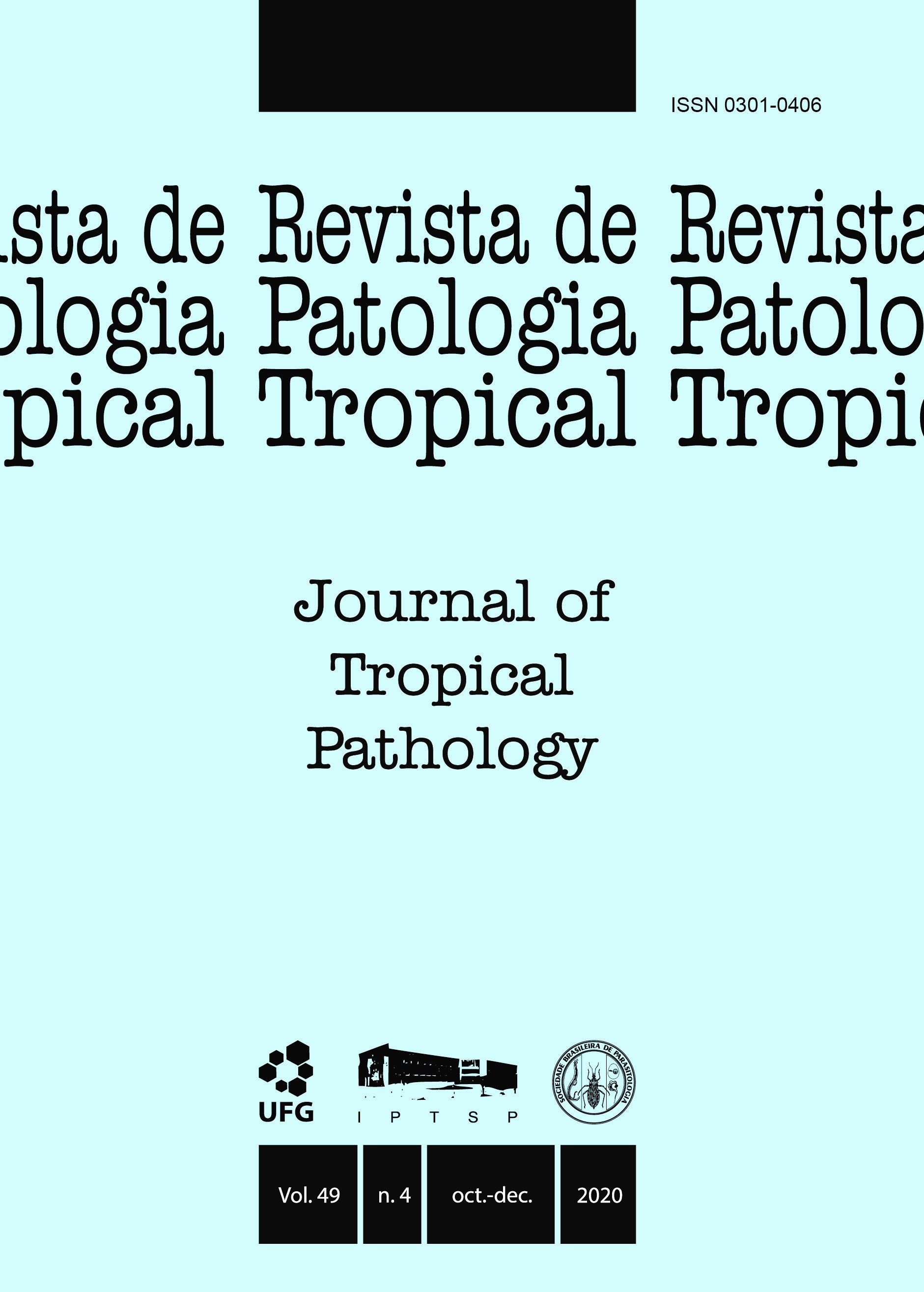TRICHOMONAS VAGINALIS in female prison inmates from Uberlândia, Minas Gerais, Brazil: prevalence, diagnosis and epidemiological aspects
DOI:
https://doi.org/10.5216/rpt.v49i4.64502Resumo
Trichomonas vaginalis is the etiological agent of trichomoniasis one of the most prevalent sexually transmitted infections worldwide. This paper aimed to determine the prevalence and the risk factors associated to the dissemination of the parasite in the prison environment, as well as comparing the diagnostic methods used for its detection. The present study included 56 female inmates at Professor Jacy de Assis Penitentiary, in Uberlandia, Minas Gerais, Brazil, regardless of ethnicity, socioeconomic status, age and sexual orientation. To diagnose T. vaginalis, wet mount and culture in TYM medium were utilized. The results were compared
to the Papanicolaou test, the routine diagnostic method used in prisons. To outline the socioepidemiological
profile of the participants an investigative survey was applied during an interview preceding the medical consultation. Of the 56 women included in the present study, six were diagnosed positive for T. vaginalis, by the three methods resulting in a prevalence of 10.7%. Culture and wet mount presented 100% specificity and sensitivity. On the other hand, sensitivity and specificity of the Papanicolaou test were 75% and 96%, respectively. None of the variables analysed, herein, could be associated with the infection. Despite the presence of the parasite, it was not possible to set an epidemiological pattern for positive patients, highlighting
the particularities of this population. Regarding the diagnostic methods, wet mount and culture were equally efficient and superior to Papanicolaou in detecting T. vaginalis.
KEY WORDS: Trichomoniasis; penitentiary; diagnosis; women; risk factors.
Downloads
Publicado
Como Citar
Edição
Seção
Licença
The manuscript submission must be accompanied by a letter signed by all authors stating their full name and email address, confirming that the manuscript or part of it has not been published or is under consideration for publication elsewhere, and agreeing to transfer copyright in all media and formats for Journal of Tropical Pathology.

